Bringing My Characters to Life: The AI Image Generator Experiment
As a writer, one of the most thrilling aspects of crafting a story is the opportunity to breathe life into your characters, making them vivid and unforgettable for your readers. In my case, as the author of “The Leslie Kim Serials,” a book series that has been my labor of love for years, the characters have become as real to me as any living person. However, translating that vision into visual representations has always been a challenge, until now.
In today’s blog post, I’m excited to share an exhilarating journey into the world of artificial intelligence and how it allowed me to transform the characters from my beloved book series into stunning, lifelike images. This incredible breakthrough not only enhanced my own understanding of my characters but also brought a whole new dimension to the reading experience for my audience.
Here are the results of harnessing the power of AI image generation to create compelling visual representations of the characters from “The Leslie Kim Serials.” Let’s embark on this artistic adventure together and explore the magic of AI in the realm of storytelling.
Leslie Kim
Obviously, the story centers around Leslie solving mysteries in a post-apocalyptic world. It is challenging to get the AI to cooperate in terms of age for Leslie. I pictured him in his late thirties, while AI tends to make characters look quite a bit younger, and adding terms like “middle-aged” or “old” tends to end up with much older-looking models (think late 60s).
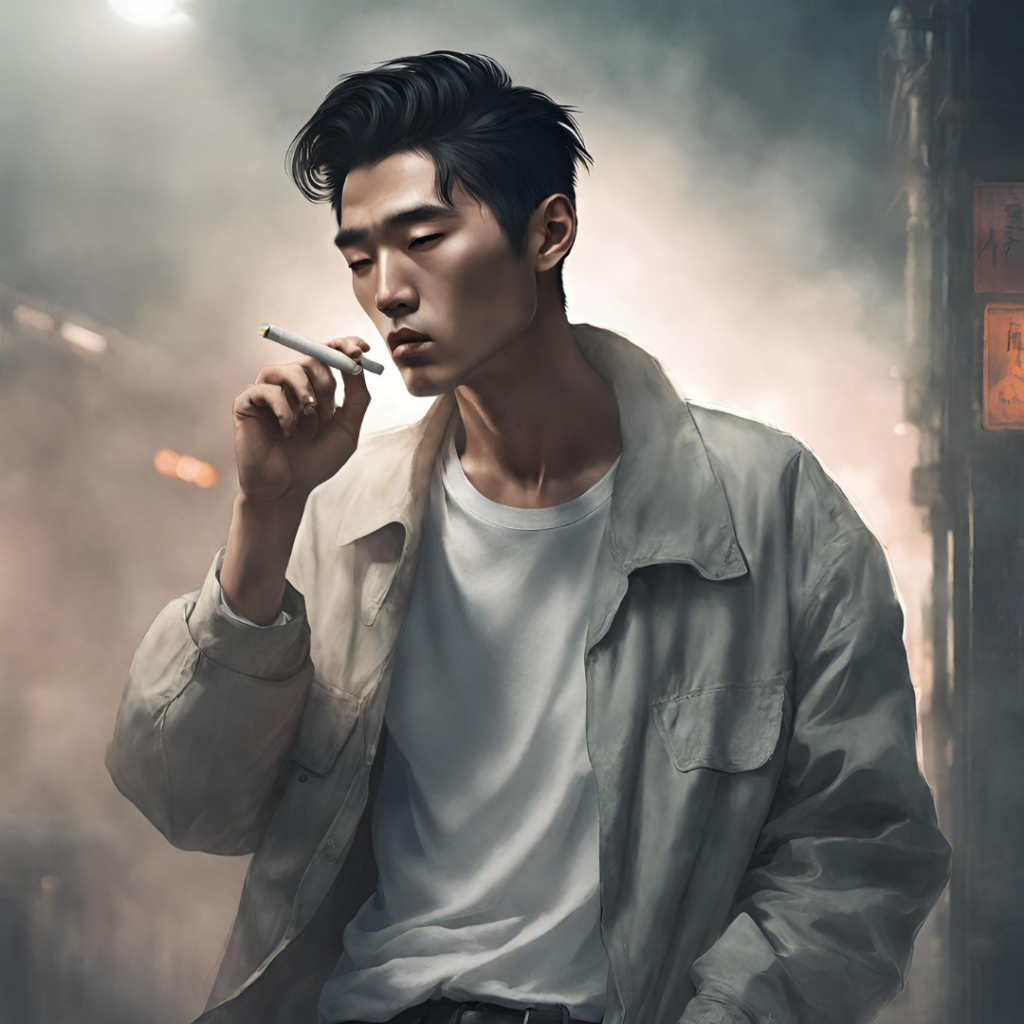
I love this concept for the title character, Leslie Kim, though the AI generator for Canva can’t quite get hands (or cigarettes) right, so they look a little off. The smoky environment looks awesome, however, and the shacket (shirt/jacket.)
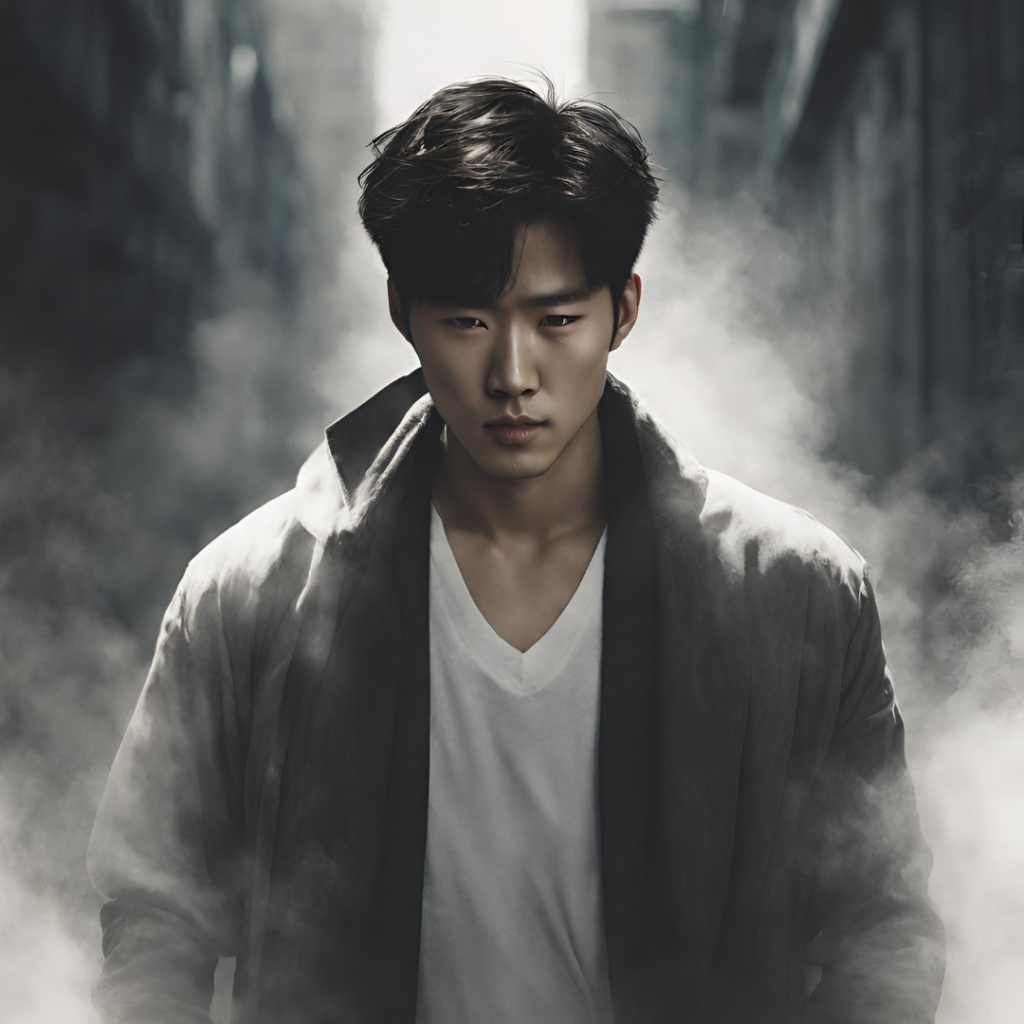
I like this one a lot. The smoke looks pretty awesome and definitely adds to the vibe of the whole story.
Victoria
Victoria is the young half-vampire girl that Leslie begins taking care of during the course of the series. Since she was raised in a lab, she has nowhere to go after said lab explodes. Leslie, along with an alien named Verna, cares for her for a short period of time. I love this idea for Victoria, although in this image she looks like a young teenager and in the books, she is much younger, around 8 years old.
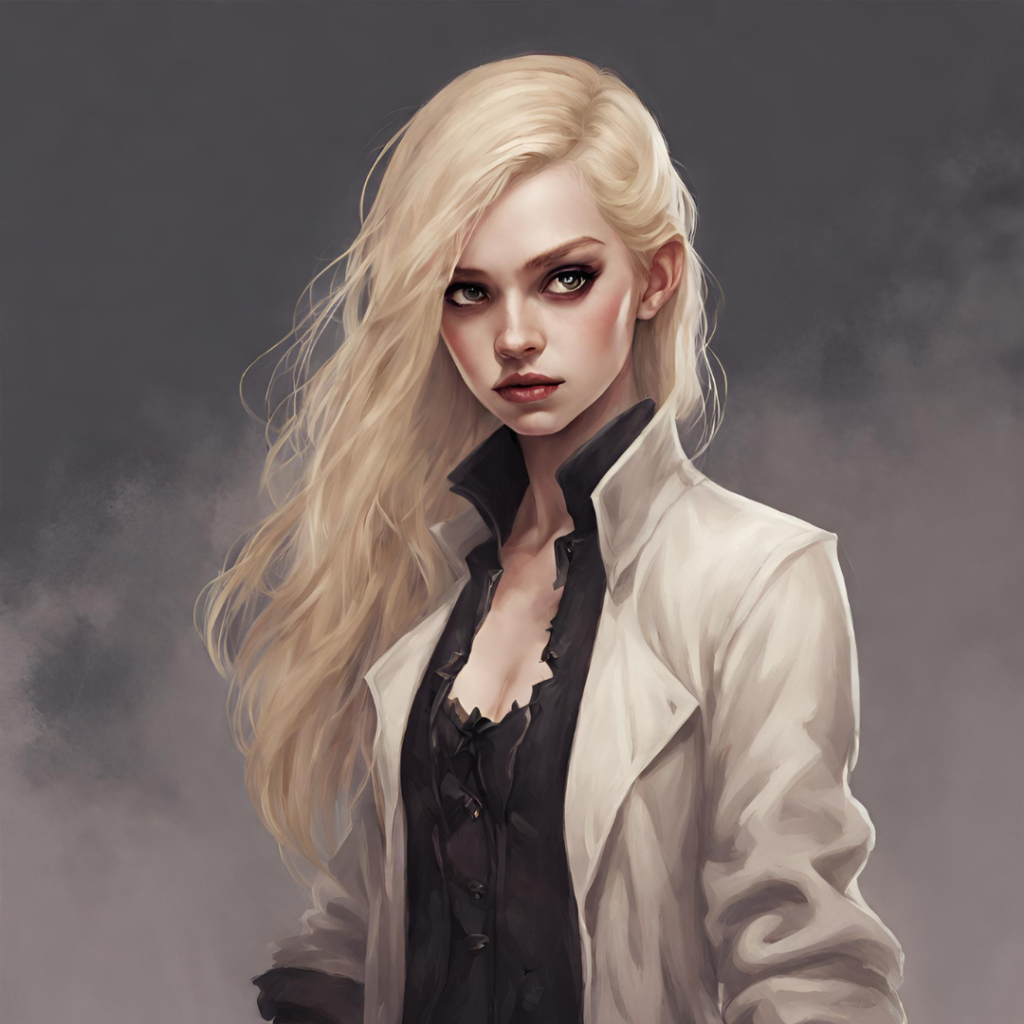
Tai Reed
Tai Reed is definitely one of those characters who rides the line of antagonist/villain. It was super challenging to get the program to cooperate with the description of her. It’s hard for AI to get the eyes right since they are “lifeless” and often are looking in the wrong direction. One version looks like she is straight out of a comic-book and while I pictured her as having short, curly hair, it went with this pixie cut. Which is actually super cute, but not quite right.
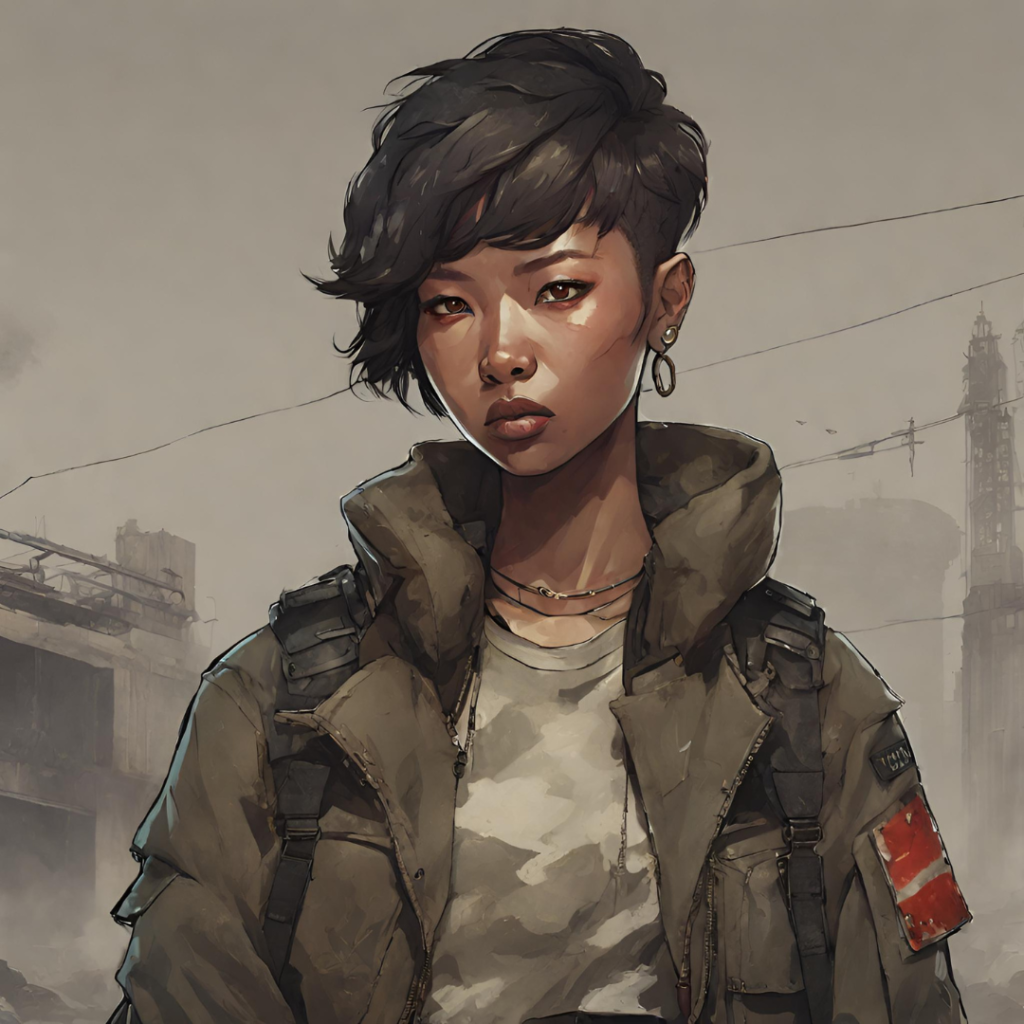
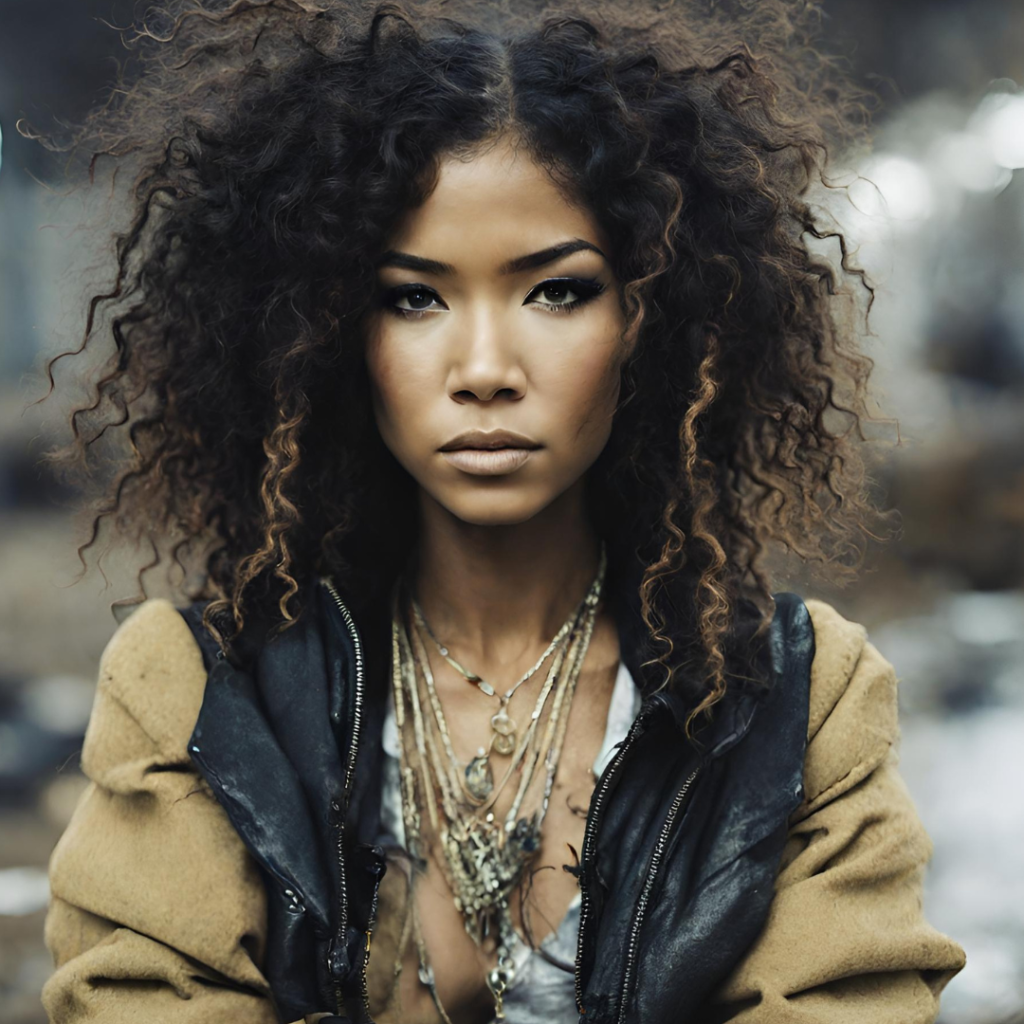
This photo is actually really great. The only thing a bit off about it is if you look too closely at what on earth that jewelry is on her neck. It doesn’t quite connect anywhere and looks kind of creepy.
Kapatonians

This one is difficult to get AI to generate an image for. Of course, they are aliens and that is challenging to describe in ways that the AI will cooperate with. This particular image has somewhat of a beak, which isn’t lore-accurate, but I like this concept for the eyes and the tentacles.
Acacia
Apparently, Canva’s AI Image Generator loves to put pixie cuts on women. Acacia isn’t described in The Bayou as having a pixie cut, but she does have “fiery hair” and military-esque garb. I really love this image (except for the neck, what the heck is going on there?)
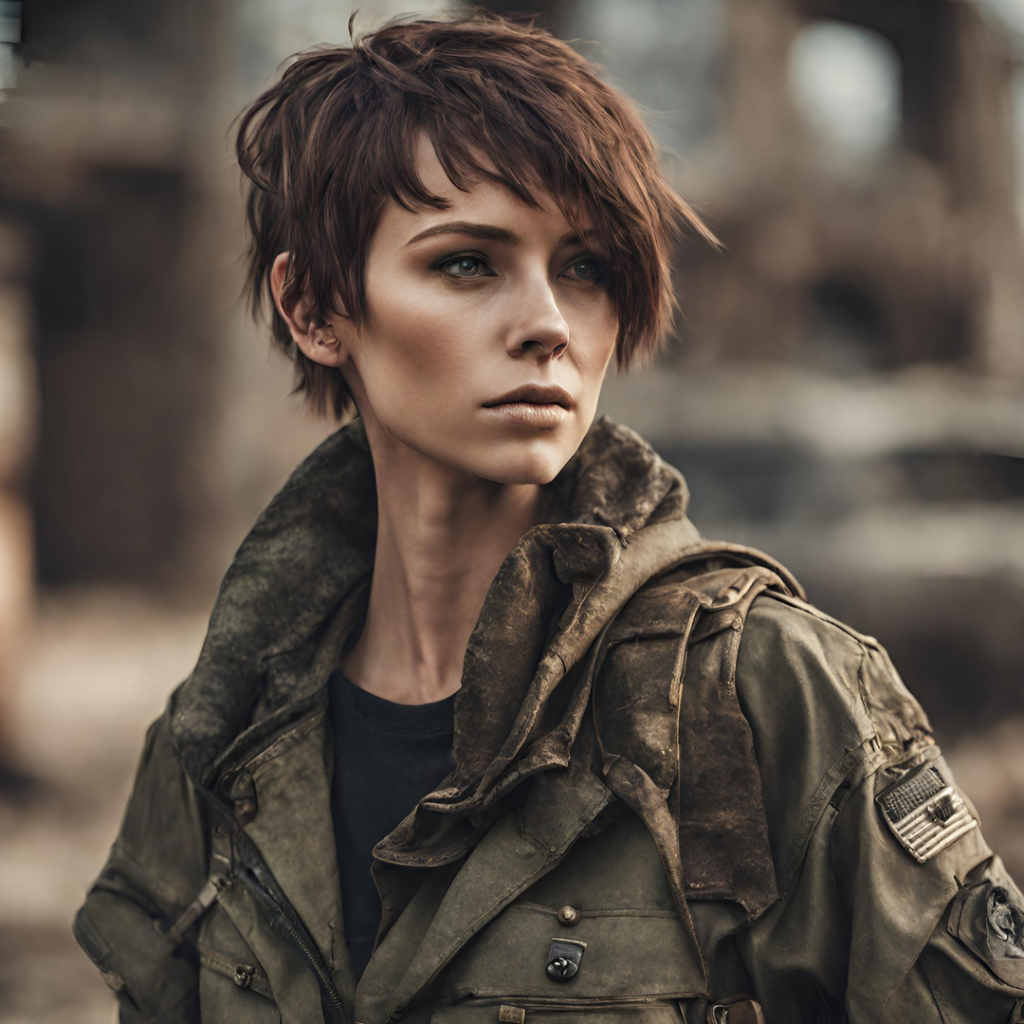
How the Use of AI Has Helped Me Understand My Characters
Bringing Characters to Life
While the power of words is undeniable, there’s something uniquely captivating about seeing your characters come to life through visual representation. These images felt like my characters were being cast into a show. I want to see this story brought to life as a comic or an anime. I love this world and seeing these characters in a lifelike way makes me want to dive back into it. The process of writing out their facial features, hairstyles, and clothing brought a new level of specificity to my characters, making them feel more real to me.
Refining Character Traits
As I delved into the minutiae of creating character visuals, I found myself reconsidering various traits, both physical and personality-based. The process of choosing the right expressions and postures for my characters forced me to think deeply about their emotions and mannerisms.
Inspiring New Story Arcs
Surprisingly, the images generated by AI sparked fresh ideas for character arcs. Seeing my characters visually allowed me to contemplate their backgrounds, motivations, and potential paths in a more visual way. This unexpected benefit added layers to my storytelling, enhancing the narrative experience for both me and my readers.
This definitely surprised me, but as I saw these characters come to life, I felt inspired to write more. I had previously thought about writing a book where Victoria has grown up a bit, maybe even skipping into the mid-teen years, and seeing the photo of her above makes me want to write that story like tomorrow.
Improved Reader Engagement
Perhaps the most exciting outcome of using AI image generators is the ability to share them with you, my readers! Hopefully these images help to give you a tangible connection to the world within the series.
In conclusion, the use of AI image generators has been a transformative experience in my journey as an author. It has not only allowed me to create captivating visuals of my characters but has also opened up new dimensions for character development and storytelling. The process has reinvigorated my passion for “The Leslie Kim Serials” and has connected me to my characters in ways I never thought possible. By leveraging the power of AI, I’ve not only unlocked the potential of my characters but also discovered a new way to share the magic of storytelling with my readers.
I’m definitely going to create images for the Paige Parker series and I plan to use the AI generators to help me develop characters before I write them to give an added layer of depth to my references.


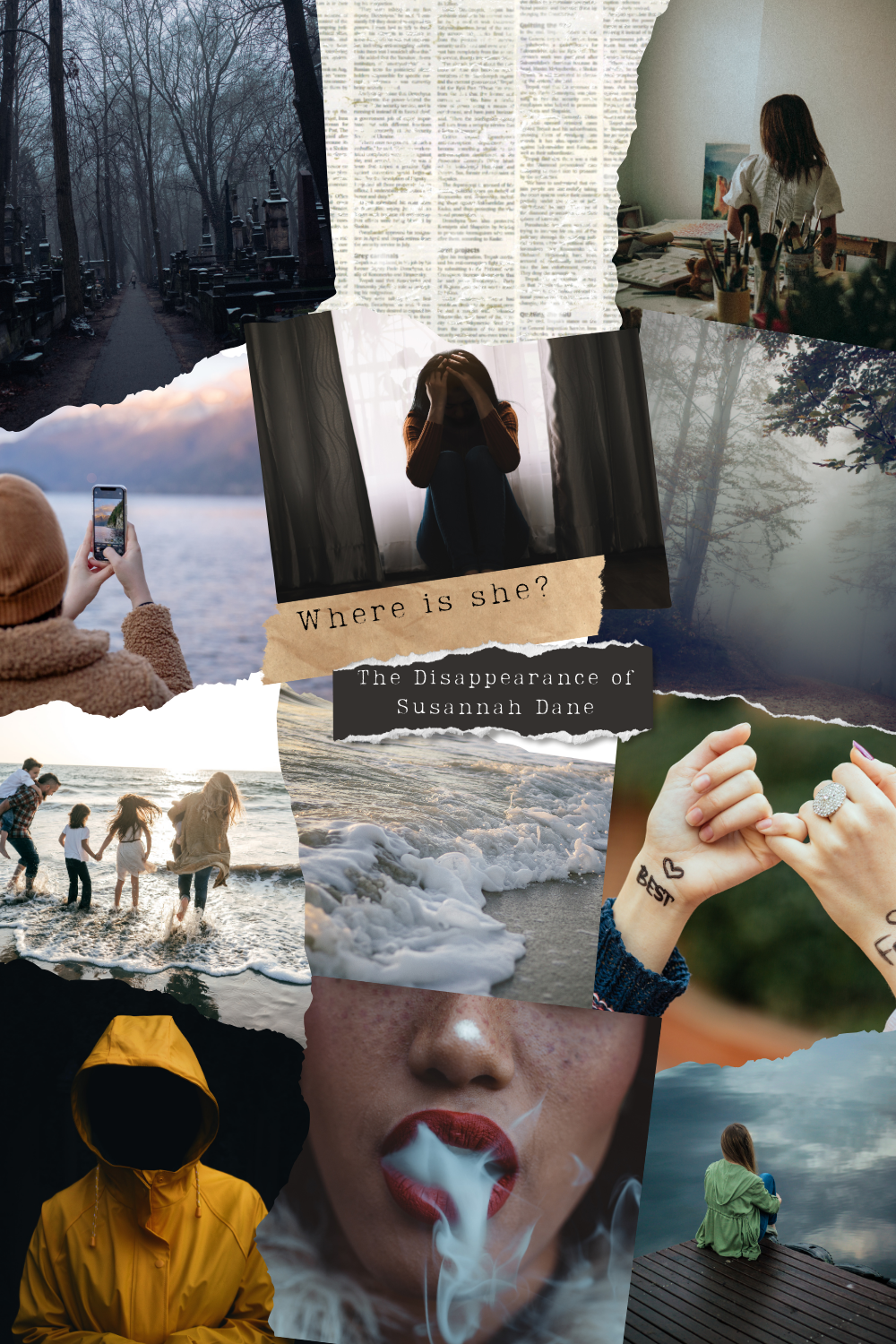
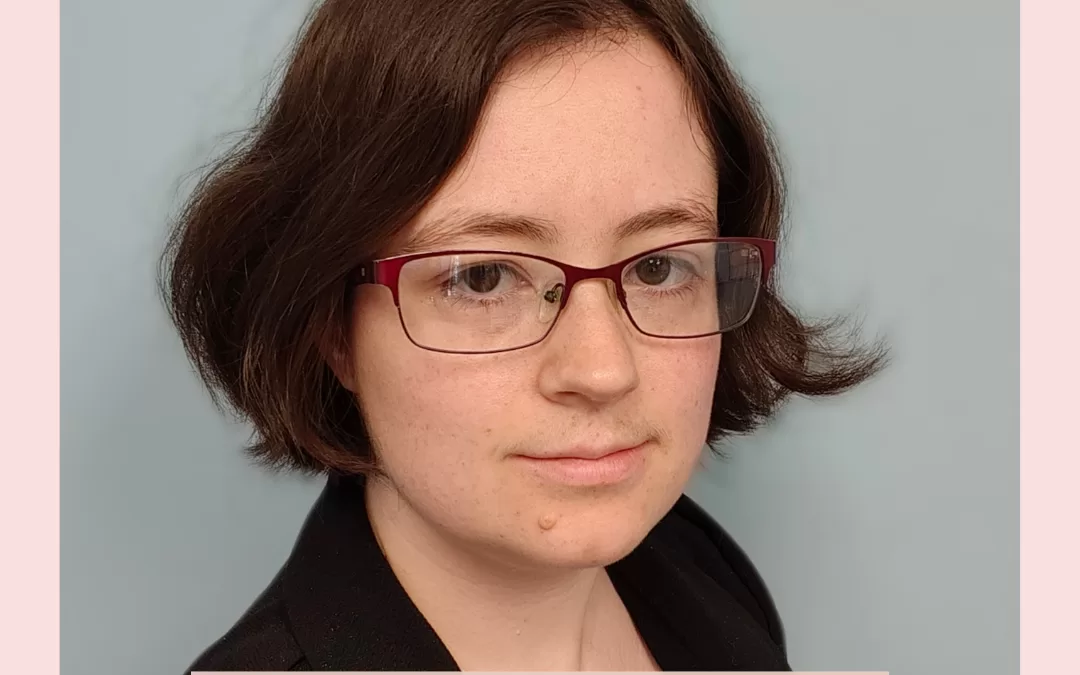

0 Comments